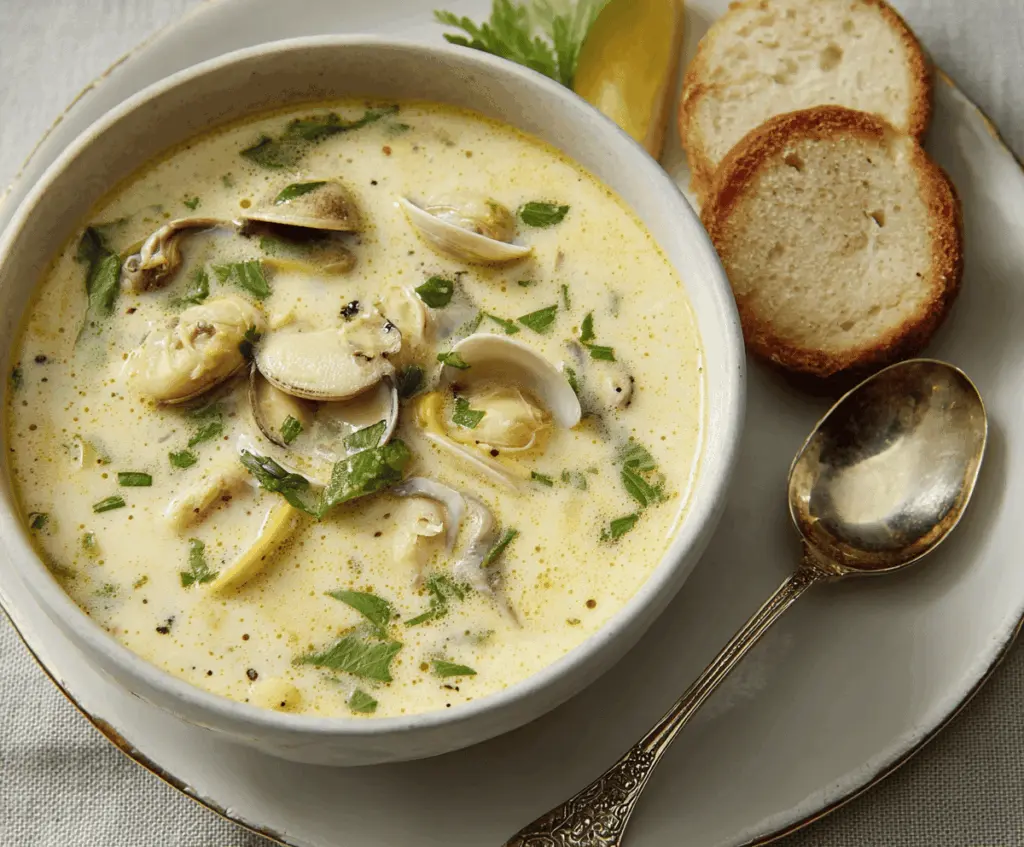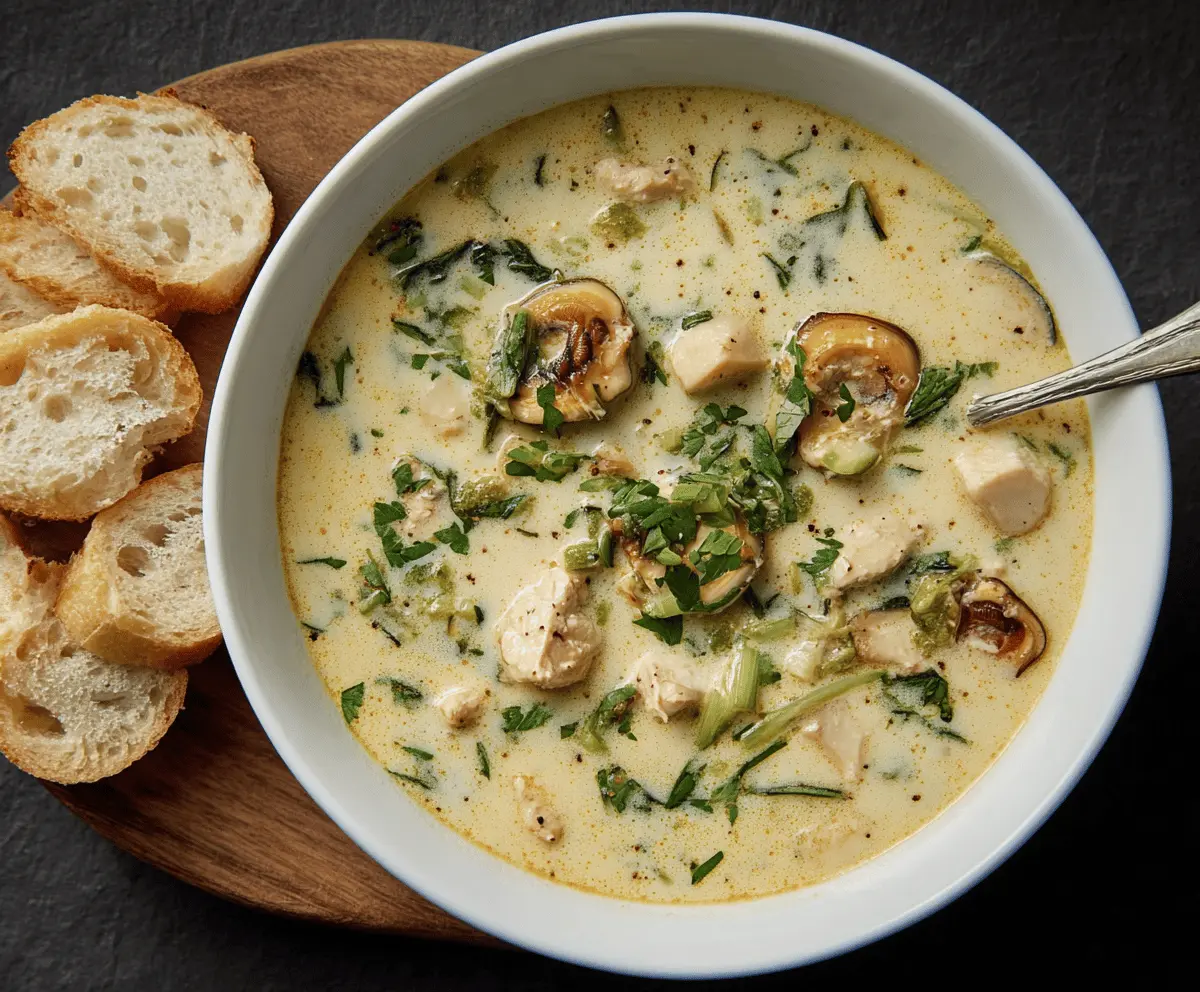
Oyster Stew Recipe
Oyster Stew is a simple, comforting dish that highlights the fresh, briny flavor of oysters with a creamy, gentle broth. The stew usually combines fresh oysters, milk or cream, butter,…
Tip: save now, cook later.Oyster Stew is a simple, comforting dish that highlights the fresh, briny flavor of oysters with a creamy, gentle broth. The stew usually combines fresh oysters, milk or cream, butter, and a touch of seasoning, making it feel like a warm hug on a chilly day. The oysters keep their natural tenderness and add a lovely texture that’s hard to forget.
I love making oyster stew when the weather turns cool because it’s quick to prepare and feels special without much fuss. One little tip I’ve picked up is to add the oysters at the very end to keep them tender and not overcooked. It’s such a treat to have those little bursts of ocean flavor with every spoonful!
This stew is perfect served with some crusty bread on the side to soak up all that creamy goodness. Whenever I make it, it feels like sharing a bit of a cozy, old-fashioned meal that brings people together—simple, tasty, and just right for relaxing evenings at home.
Key Ingredients & Substitutions
Fresh Oysters: These are the heart of the stew, bringing that unique ocean flavor. If fresh oysters aren’t available, canned oysters can work but expect a different texture and milder taste.
Butter: Butter adds creaminess and richness. Unsalted butter is best so you control the salt level. For a dairy-free option, try a mild coconut oil or plant-based butter substitute.
Milk or Heavy Cream: Cream gives the stew its smooth, comforting texture. Whole milk is a lighter choice. For non-dairy, unsweetened oat or cashew milk can be used, but avoid flavors that may overpower the oysters.
Onion: Sautéed onion adds a subtle sweetness. Yellow or white onions both work well. If you want a milder touch, try shallots instead.
Seasoning: Keep it simple with salt and freshly ground black pepper. Fresh parsley adds a fresh, herbaceous note that brightens the dish.
How Do You Keep Oysters Tender and Flavors Balanced in Oyster Stew?
The biggest trick is gentle heat. Oysters cook quickly and turn tough if overdone.
- Start by warming milk or cream slowly to avoid scorching.
- Add oysters and their liquor last, cooking just until the edges begin to curl—about 2 to 3 minutes.
- Keep the stew from boiling once oysters are added to preserve their texture.
- Season toward the end so the delicate oyster flavor isn’t overwhelmed.
This careful approach keeps the broth silky and oysters tender, for a well-balanced, delicious stew every time.
Equipment You’ll Need
- Large saucepan – perfect for gently cooking the stew without burning the milk or cream.
- Wooden spoon – helps stir the stew smoothly without scratching your pan.
- Fine mesh strainer – handy if you want to rinse oysters to remove grit safely.
- Measuring cups and spoons – for precise butter, milk, and seasoning amounts.
- Soup bowls and ladle – for serving the stew warmly and easily.
Flavor Variations & Add-Ins
- Add chopped cooked bacon or pancetta for a smoky, salty touch that pairs well with oysters.
- Stir in diced potatoes or corn for extra heartiness and texture.
- Use fresh chives or dill instead of parsley for a different herb aroma and taste.
- Swap half the milk for clam juice to boost the seafood flavor without overpowering the oysters.

How to Make Oyster Stew
Ingredients You’ll Need:
Main Ingredients:
- 2 pints fresh oysters with their liquor
- 4 tablespoons unsalted butter
- 1 small onion, finely chopped
- 2 cups whole milk or heavy cream
- Salt and freshly ground black pepper, to taste
- Fresh parsley, chopped (for garnish)
For Serving:
- Lemon wedges (optional)
- Slices of toasted bread or crackers
How Much Time Will You Need?
This recipe takes about 15 minutes to prepare and cook. It’s a quick and easy stew that comes together in no time, perfect for a cozy weeknight meal.
Step-by-Step Instructions:
1. Preparing the Oysters:
Gently rinse the oysters to remove any grit, but keep their liquor (the liquid inside) intact. Set both aside for cooking.
2. Cooking the Base:
In a large saucepan, melt the butter over medium heat. Add the finely chopped onion and sauté for about 3 to 5 minutes until it is soft and translucent. Be careful not to brown the onions as you want a gentle flavor.
3. Heating the Cream:
Pour in the milk or heavy cream and warm the mixture over medium heat. Stir occasionally to prevent the milk from scorching. Heat until just warm, but do not let it boil.
4. Adding the Oysters:
Add the oysters along with their liquor to the warmed milk or cream. Cook gently, stirring occasionally, just until the oysters curl up on the edges—about 2 to 3 minutes. Avoid boiling once oysters are added to keep them tender.
5. Seasoning and Serving:
Season the stew with salt and freshly ground black pepper to your taste. Ladle the oyster stew into bowls and garnish with chopped fresh parsley. Serve immediately with lemon wedges, toasted bread, or crackers on the side for dipping.
Enjoy the rich, delicate flavors of this classic oyster stew, warm and comforting with every spoonful!
Can I Use Frozen Oysters for This Stew?
Yes, you can use frozen oysters, but be sure to thaw them completely in the refrigerator overnight and drain any excess liquid before cooking to avoid diluting the stew.
How Should I Store Leftover Oyster Stew?
Store leftovers in an airtight container in the fridge for up to 2 days. Gently reheat on the stove over low heat to avoid curdling the milk or toughening the oysters.
Can I Substitute Milk with Another Dairy or Non-Dairy Option?
Whole milk or heavy cream is best for creaminess, but you can substitute with half-and-half or a non-dairy milk like unsweetened oat milk. Avoid strong-flavored plant milks to keep the stew’s delicate taste.
Is It Okay to Add Other Ingredients Like Potatoes or Bacon?
Absolutely! Diced potatoes or cooked bacon can add body and flavor, just add them early enough to cook properly. Keep in mind this will change the classic simplicity of the stew.
